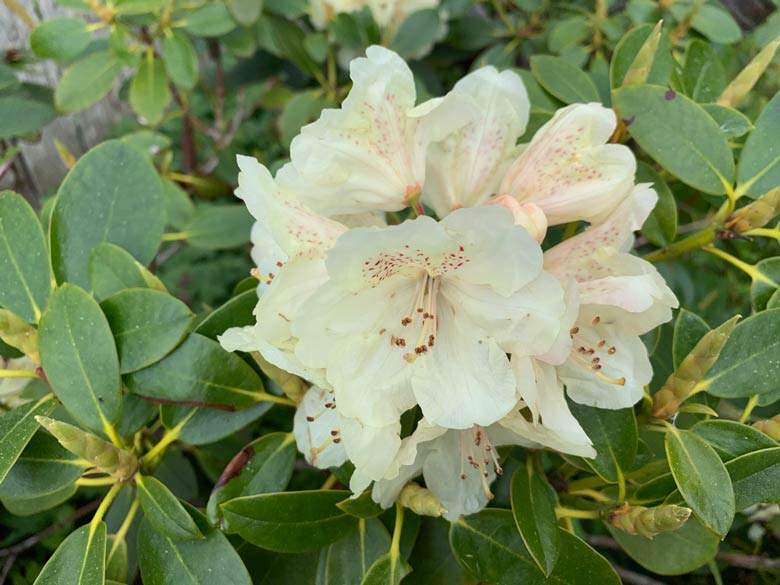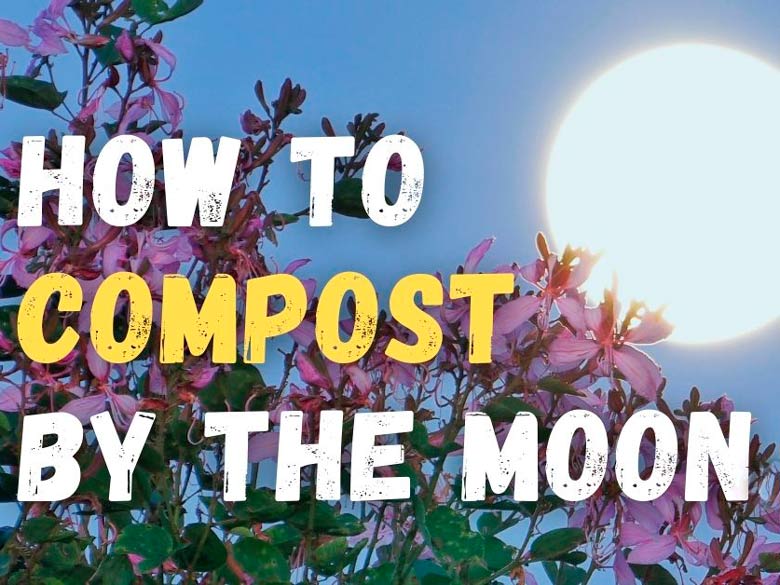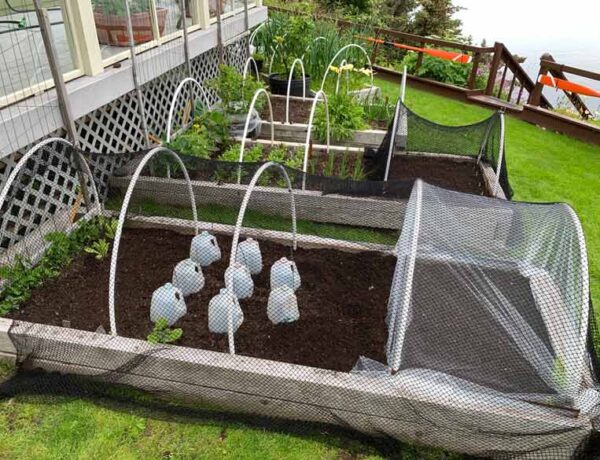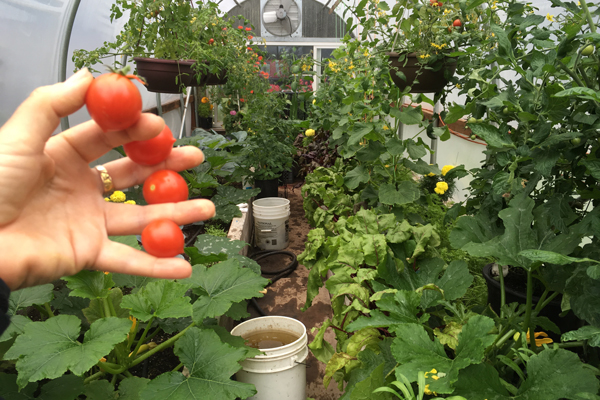If you compost, you might find this question interesting. If you don’t compost, I’ll be upfront: You and your garden are missing out. Big time. Anyway, here’s the question that recently popped into my inbox: I’ve heard of planting by the moon. Are there some general guidelines? And what about composting by the moon?
Here we go… Gardeners and farmers have been using moon phase gardening for a lo-n-n-ng time! It’s a fairly simple process and many folks swear that it gives you a deeper feeling of connecting with nature.
Just as the moon’s gravitational pull affects the tides, it also has a more subtle (but still relevant effect) on soil moisture, pulling it up toward the soil surface.
Heck, does planting by the moon really work?
[Hi, Marion here. This article was originally published in the Kodiak Daily Mirror, the hometown newspaper for Kodiak, Alaska. Go here to access the archive page for the list of my past columns, written each week since 1986].
Talk to any bartender, and they’ll tell you that things can get a little crazy during the full and new moon. So it only makes sense that the pull of the moon affects just about everything.
Here’s what Melissa, one of my newsletter subscribers, told me the other day:
[perfectpullquote align=”full” bordertop=”false” cite=”” link=”” color=”” class=”” size=””]”I’ve been gardening by the moon for years. The final quarter is a time of rest and you may notice your plants grow a bit less that week. Good time to weed. I swear people have less energy too. Not a good week to ask someone for a favor!”[/perfectpullquote]
In a bit, I’ll list other ways to “work with” the phases of the moon.
Meanwhile, here are a few guidelines for gardening by the moon…
First, don’t just read this article and forget about it. See for yourself. Be a “citizen scientist”: Plant seeds on different phases of the moon and note your results.
Aboveground Crops
All aboveground crops should be planted when the Moon is waxing (growing visibly larger). This is the best time to sow or transplant leafy annuals such as lettuce, spinach, and cabbage.
Below-Ground (root) Crops
Root crops do best when the Moon is waning (growing smaller). It’s a good time to plant potatoes, beets, and turnips, and also fruit trees.
Other garden tasks, such as composting, etc.
According to the Farmer’s Almanac, during the last quarter phase (it takes about 29.5 days for the Moon to pass through all its phases), it’s best to avoid planting at all. Wow.
Focus instead on improving your soil by weeding, mulching, and–you got it–composting!
Working with moon phases
[perfectpullquote align=”full” bordertop=”false” cite=”” link=”” color=”” class=”” size=””]For ancient peoples, the moon was more than a round rock in the sky, a pseudo-mirror reflecting the sun’s light back to Earth at night. The moon was mysterious in its movement and changing faces.[/perfectpullquote]
While modern society no longer relies on the moon as much as our ancestors did, turning more to their clocks and smartphones, following moon phases can give you a deeper sense of connection to the cycles of nature. Some folks say that it can boost mindfulness and keep you working toward your goals.
So what does “working with the phases of the moon” look like?
You simply become aware of and commit to addressing different areas of your life through each lunar cycle.
In a way, you use the moon as a spiritual calendar.
This might sound airy-fairy, but give it a go. Make notes in a journal, as you would for when you planted broccoli seedlings.
Here are two basic guidelines:
>>> Use the new moon as a time to reboot and get a fresh start. Set goals and intentions that you want to fulfill by the next full moon.
>>> Use the full moon as a time to reflect, be grateful and release something from your life so you can make space for something new and better by the next new moon.
One more question for today’s column…
Q: My rhododendron is lanky with broken branches from last winter.
When is the best time to prune it?
The best time to prune your rhododendron is also within a couple of weeks after flowering. And right now the flower trusses are coming into full glory.
New growth will soon emerge, and by mid-summer, next year’s flower buds will form at the end of newly grown branches. I’ve heard that if you wait too long, pruning can interfere with the budding process and reduce the number of blossoms next year.
Incidentally, do you know the difference between flower buds and leaf buds? Flower buds are more rounded than the pointed buds that will eventually become leaves.
Check out this photo. See the pointy leaf buds?

[perfectpullquote align=”full” bordertop=”false” cite=”” link=”” color=”” class=”” size=””]A lot of people panic at the thought of approaching their rhodies armed with pruning shears. But you can’t harm a rhodie by trimming it.[/perfectpullquote]
The plants are covered with barely noticeable buds (called latent buds) that will “break” into action to become new branches wherever you cut. And you can prune the entire plant back to 12 inches from the ground.
Keep in mind though, the farther down you cut, the more potential flowers you remove, and it can take a while before new ones will take their place.
Meanwhile, for the next few weeks, enjoy the beautiful floral displays around town.
In the Garden:
- Rotate hanging baskets and containers
- Tomato tips: Do not pinch suckers from determinate tomatoes. Most gardeners DO pinch suckers from determinate tomatoes (the type that keeps growing). There are pros and cons to pinching– I’ll cover this in a future column.
- Pick slugs!
- Sow new crops of cilantro, lettuce, and other salad greens.
- Deadhead flowers and train peas.
I hope you enjoyed this sneak-peek into life on Kodiak Island.
Cheers, and I hope your week goes well…

-=-=-+||| = |||+-=-=-
PS Gardening doesn’t have to be hard! Cut your garden maintenance in half. Help your plants survive a drought. Make weeds easier to pull. After 35 years of gardening, I have learned one important thing: Compost is the answer to all your problems. Want to know how to make compost in just 6 weeks? Begin by taking this composting assessment. And hey, you might enjoy my Joy of Composting Facebook page. If you’d like to drop me a note, here’s my email address: marion (at) marionowenalaska.com.





No Comments